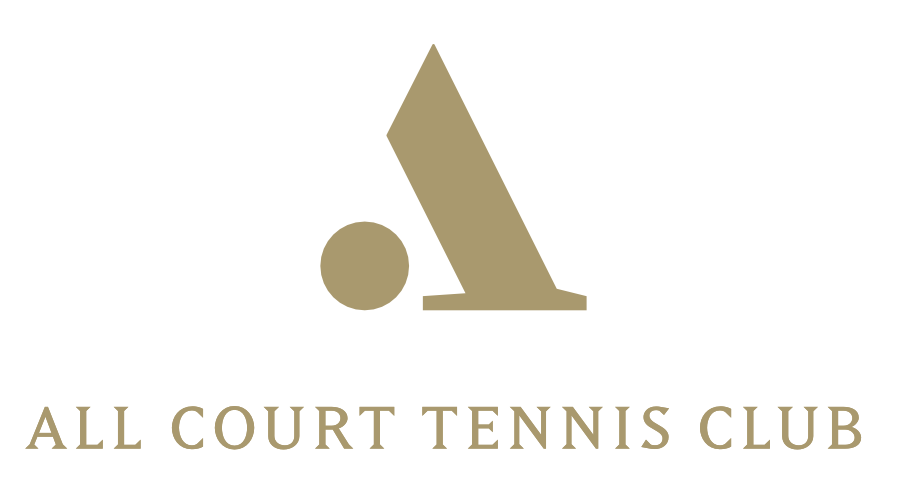Even New York, which has the storied New York Athletic Club and West Side Club (otherwise known as Forest Hills), where Billie Jean and Johnny Mac — and all those others famous-nicknamed players flattened balls — can’t compare.
While Berlin itself hasn’t produced a champion, the likes of Boris Becker or Steffi Graf in nearly twenty-five years, the city does know how to court the fifteen percent of Berliners who play the local circuit. The legacies will tell you that TC 1899 e.V. Blau-Weiß (the Blue-White Club) or the Lawn Turnier Tennis Club Rot-Weiß Berlin (Red-White Club) have the best clubhouses (and biergartens), coaches and clay in Germany. But the transplants who live in or frequent the former communist side of the city — neighbourhoods such as Kreuzberg and Schöneberg, past Checkpoint Charlie and the East Side Gallery (aka the remains of the Berlin Wall) — prefer the no-fuss, hole-in-the-alley neighbourhood joints with backyard clay courts, semi-private changing rooms and graffiti murals. There, middle-class players often turn up riding their Donkey Republic app bikes, toting a one-racquet Adidas backpack and wearing their favourite football jersey to play a pick-up set or two. Membership dues often include a grounds-keeping assignment.
Since the Wall went down, Berlin has become the second largest city in the European Union, expected to hit four million people by 2025 — 54 percent of them under 45 years of age. Developers have swooped in on any available space, including clay courts, to build more apartment buildings and townhouses for the burgeoning bourgeoisie. One such club, the TC Berlin Mitte Albert Gutzmann e.V., has been fighting for its life since a local school laid claim to its valuable real estate. To survive, the storied TC Berlin Mitte will have to pull a serious break-point: relocate its three outdoor tennis courts ninety degrees to the East. “Mitte is the district with the largest sports area deficit,” says board member Fred Bruss, adding that the association has 190 members from 27 nations, as well as students from Humboldt University, playing on its courts. “Already in 2016, the club collected thousands of signatures against being forced to close.”
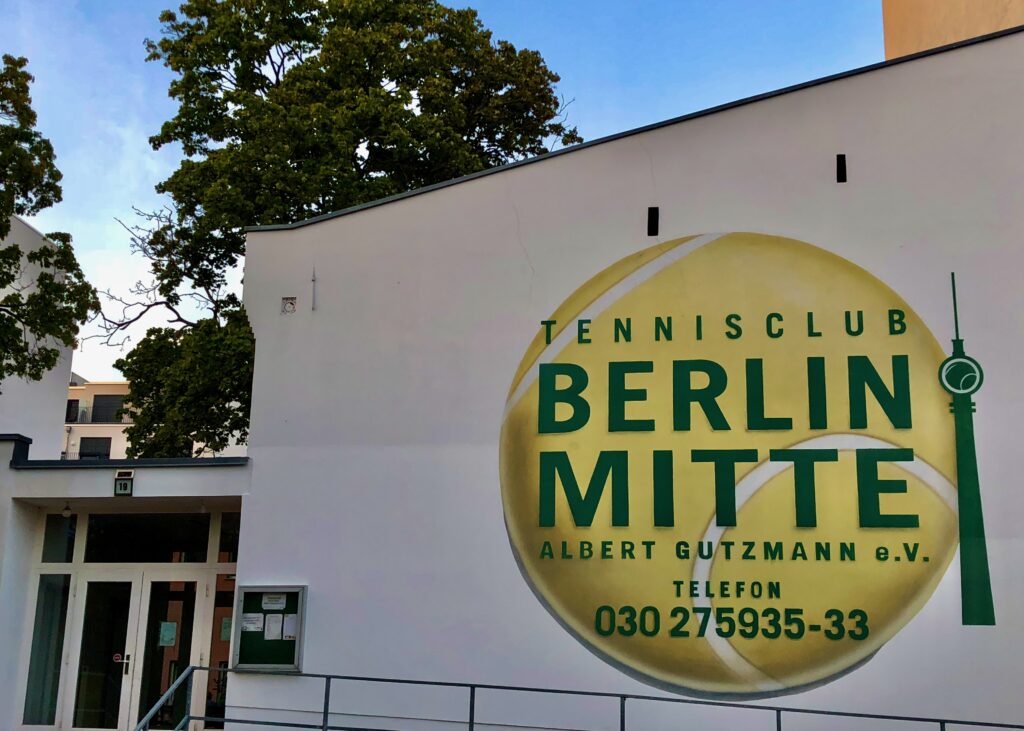
The Tennisclub Berlin Mitte Albert Gutzmann, e.V., known to regulars as the “Mitte”, came into existence in the middle of the fall of the Berlin Wall and is now fighting the occupying forces of gentrification. The Mitte must turn its three outdoor courts 90 degrees or otherwise figure out how to make room for another school in growing East Germany.
During the Open Era, the DDR (Deutsche Demokratische Republik) had one star player, Thomas Emmrich, who, according to Martina Navratilova in a 1989 article for the New York Times, “beat all the junior players in Czechoslovakia. He beat people who beat Bjorn Borg at that age. But he never had a chance to play on the outside. They were not allowed, period.” Emmrich took his case to play abroad straight to the Erich Mielke, head of the Stasi and was, unsurprisingly, denied. He said once that he thought about defecting, but worried about reprisals against his parents, who were party members. Emmrich, therefore, bided his time for the Seoul Olympics by racking up national championships at clubs such as Tennis Association SV Berliner Brauereien, currently located next door to a temporary refugee camp in Prenzlauer Berg, as well as Berlin’s only grass courts at the SG Am Hain in Volkspark Friedrichshain. The intrepid tennis pro also smuggled in racquets, tennis shoes and other Western goods from Davis Cup events to pay for his career.
Navratilova predicted a “wave of East German players” when the wall turned to a pile of rubble, and her then-boyfriend, Emmrich did eventually gain a ranking of 482 — the only DDR ranking on record — but that East German surge never undulated through the tennis world. After German reunification, Emmrich’s daughter, Manuela, and son, Martin, took up the torch, as Manuela lead the Armstrong Atlantic State college team to the 2005 U.S. Division II National Championship and Martin achieved a top thirty-five doubles ranking, respectively.
In the mid-1980s, in the Federal Republic of Germany (FRG), however, a seven-year old teen standout named Boris Becker began training at the TC 1899 Blau-Weiß. Fourteen years Emmrich’s junior, Becker turned pro in 1984 and in 1989, became the face of reunification. Well, he and Steffi Graf. But Graf had a better time cheering on would-be Wall smashers at LTTC Rot-Weiß, just down the street. “I would love to have done it, just to be a part of the moment,” Graf told the New York Times in 1989. On the other hand, Becker took the responsibility as heavily as the big chunks of souvenir Wall. “When you are thrown onto the stage at 17 in such an enormous way, it becomes living on the edge because every step you take, every word you speak, every action you do becomes headline news. And it became, for me, life or death,” Becker said the same year.
Pointedly, Becker didn’t become as monumental to the anti-communist movement as he possibly thought. However, his trophies still stand in the foyer of TC 1899 Blau-Weiß. Graf, on the other hand, has the “Steffi-Graf Stadion” to visit whenever she leaves Las Vegas for home.
To mark the 30th anniversary of the fall of the Berlin Wall, the following is a selection of portraits from the city’s oldest — and most delineative, emblematic — clubs from around the barrier that no longer stands.

Another photo of T.C. Fredrichshain. The six clay courts and small changing rooms require less upkeep than the courts outside of main Berlin, but Fredrichshain takes care of the maintenance by requiring every member over age 16 to work five hours each season.

When the “Mitte” opened its doors in 1989, it commissioned several of the neighborhood street artists to paint its wind tents on the inside and outside of the courts, accommodating the tastes of 200 members from 23 different nations who “have peacefully found each other in tennis, an ideal pastime. We are the club that lies in the melting pot of cultures…”

Although one of the oldest tennis clubs in Berlin on the Prenzlauer Berg, the Tennis Club SV Berliner Brauereien e.V. has a new neighbor: a sub-division of refugee tenements housing migrants from Syria and North Africa that arrived during the 2015 surge.
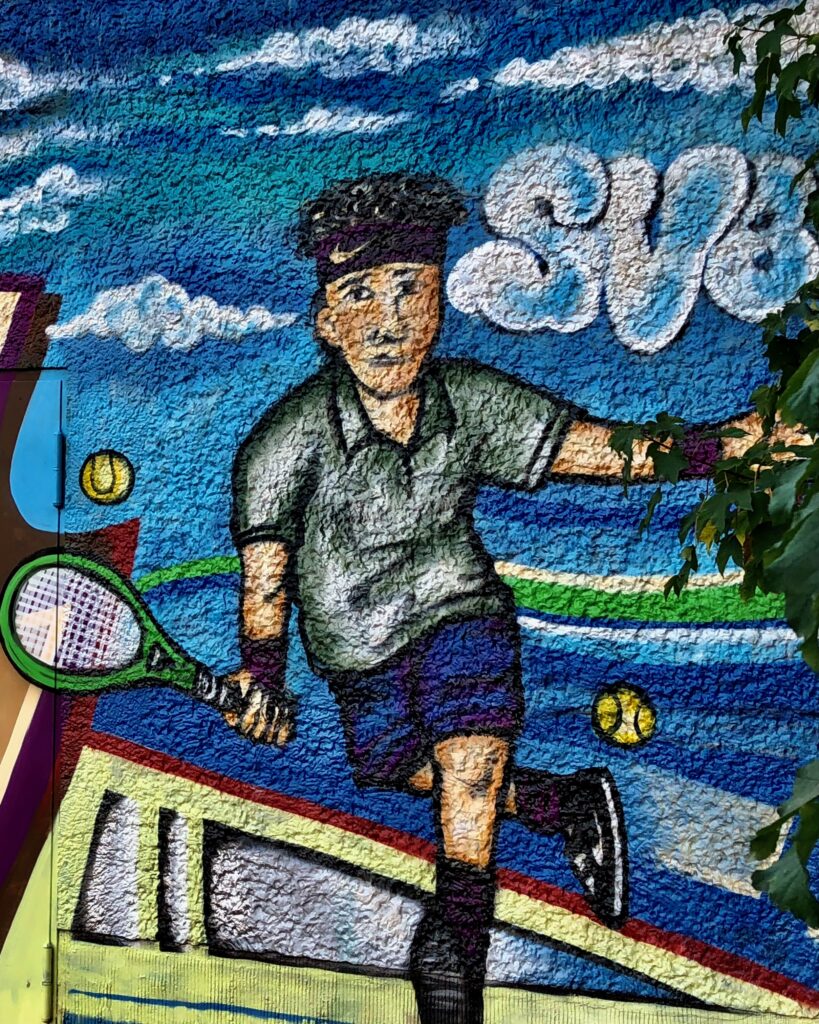
Detail from the graffiti wall outside the Tennis Club SV Berliner Brauereien e.V. The club runs 24/7 in the park and is a favorite for jet-lagged visitors who pay a nominal fee to play — until a member comes along and kicks them off.
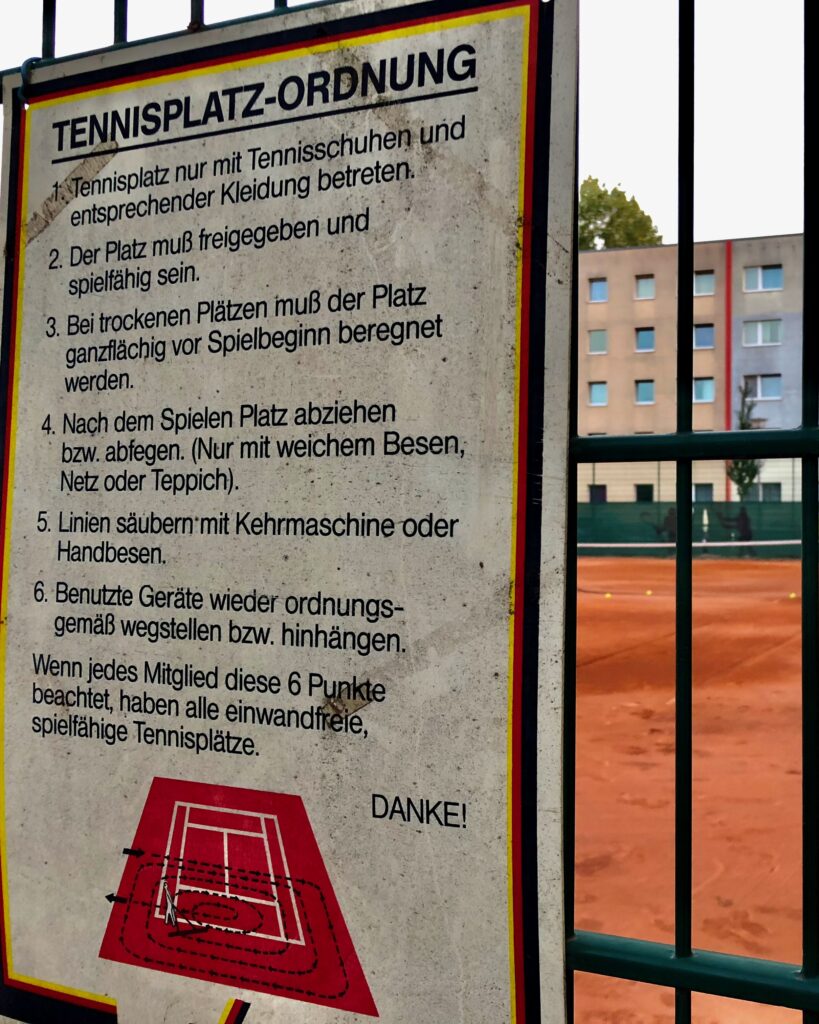
The rules posted on the courts of Tennisclub Berlin Mitte Albert Gutzmann, e.V. The city alleges that the club has been breaking ordinances of its own. For years, Berlin administrators say, the “Mitte” has been using four tennis courts on land owned by a school next door.
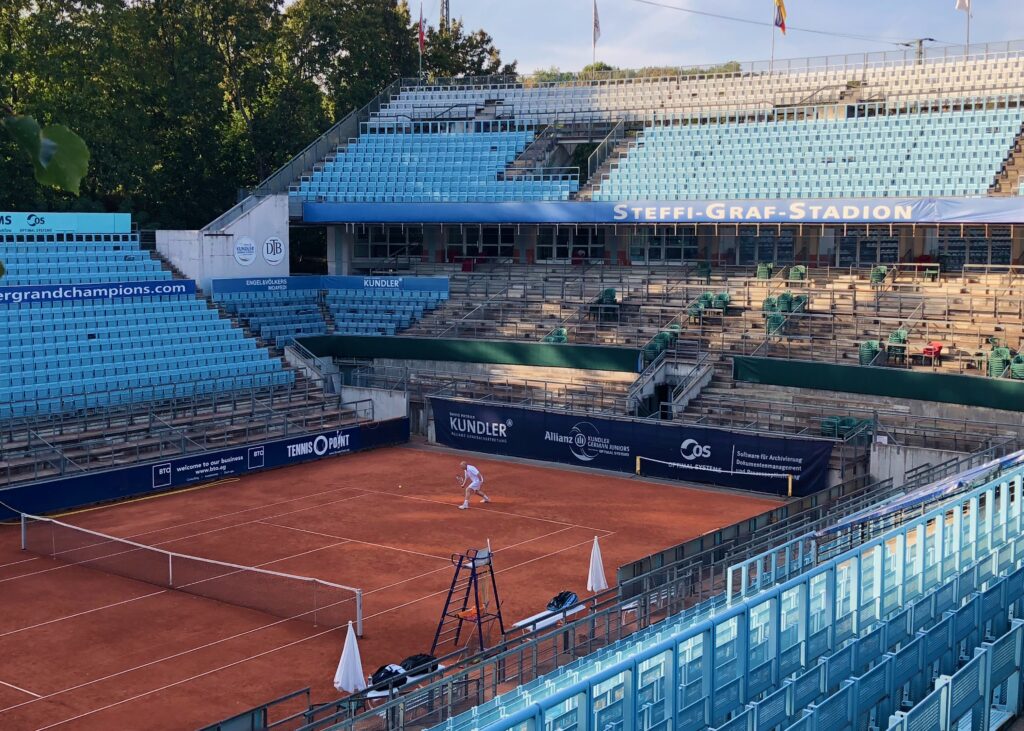
Built in 1996, the 7,000-seat Steffi Graf Stadion (Stadium) was added to the LTTC (Lawn Tennis Tournament Club) Rot-Weiß in Berlin’s Grunewald District to provide a larger venue for tournaments, such as the WTA’s German Open. Steffi Graf has been a member of the club since 1984.
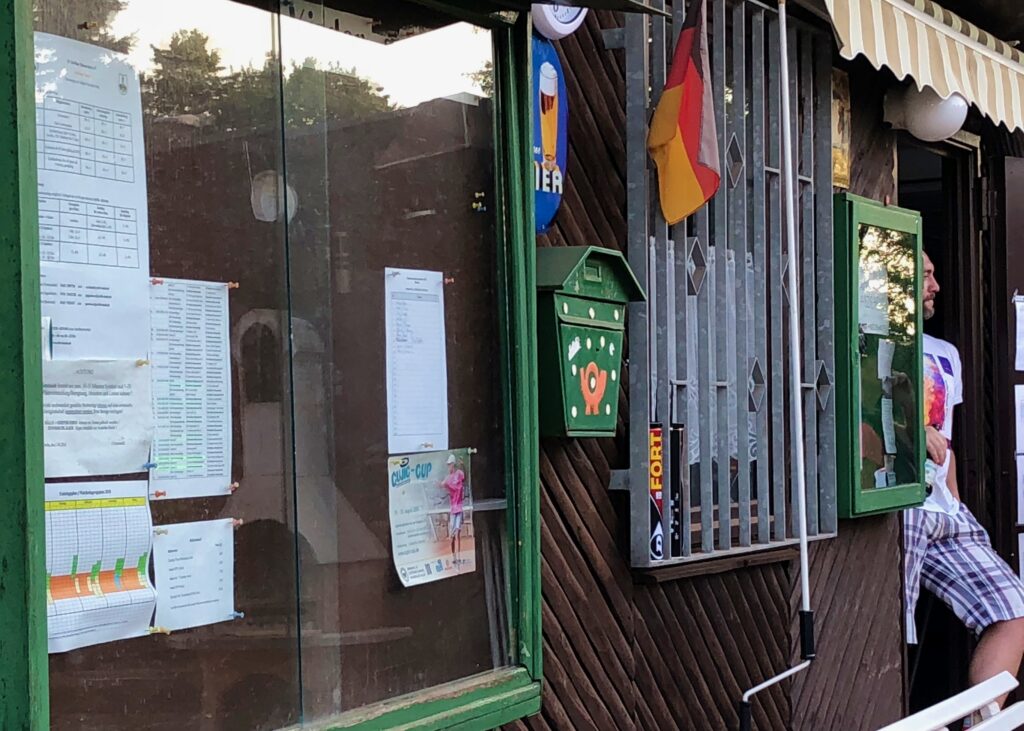
A proprietor looks out on the bier garten of the Tennis Club SV Berliner Brauereien e.V. It’s a grand tradition across the city, from the exclusive clubs in Grunewald to those of the former DDR, that competitive play earns a Schöfferhofer cool down. Whether the patio furniture is plastic or wrought iron usually depends on the class of the members.
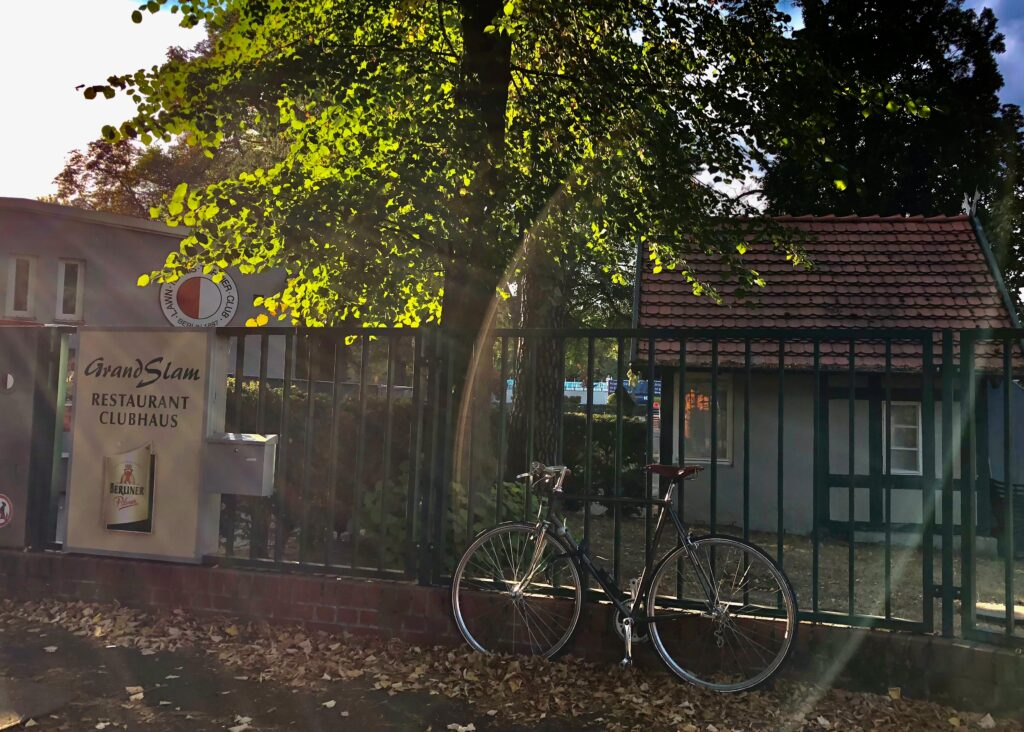
The LTTC Rot-Weiß, named for the red and white ribbons members once wore in their straw hats, sits amid Grunewald’s green leafy oasis, where the 16 immaculate outdoor and two indoor clay courts rub fences with the consulates and homes of many diplomats sent to Germany. Rot-Weiß was founded in 1897 and is just down the street from TC 1899 eV Blau-Weiß, its strictest competitor.
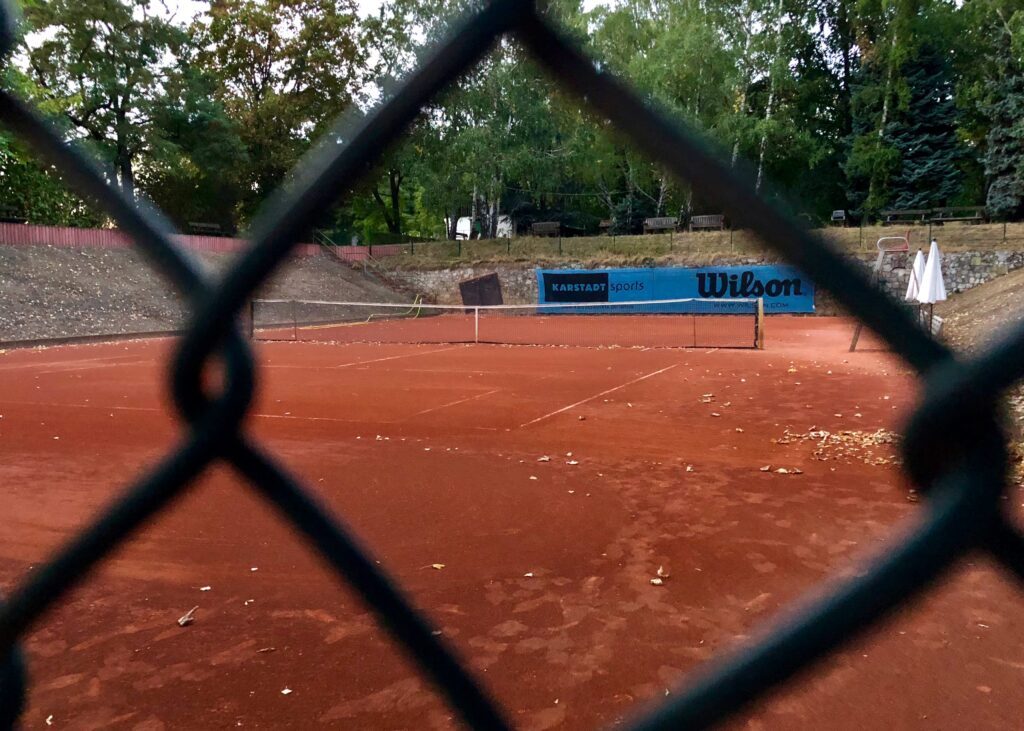
A fenced in section of the Tennis Club SV Berliner Brauereien e.V. The club’s seven outdoor courts are located in the Volkspark, or the ‘People’s Park’, which evolved from a World War II dumping ground. The park is just around the corner from a statue of Ernst Thälmann, a leading figure of Weimar Germany’s Communist party (KPD) killed in the Buchenwald concentration camp.

With the only grass courts located in Berlin, SG AM Hain in the middle of Volkspark Friedrichshain is in high demand, especially for tourists. The oldest park in Berlin, after German reunification, the swimming pools built by the GDR were replaced by a sports complex, but it has held on to the Monument to Polish Soldiers and German Anti-Fascists.
